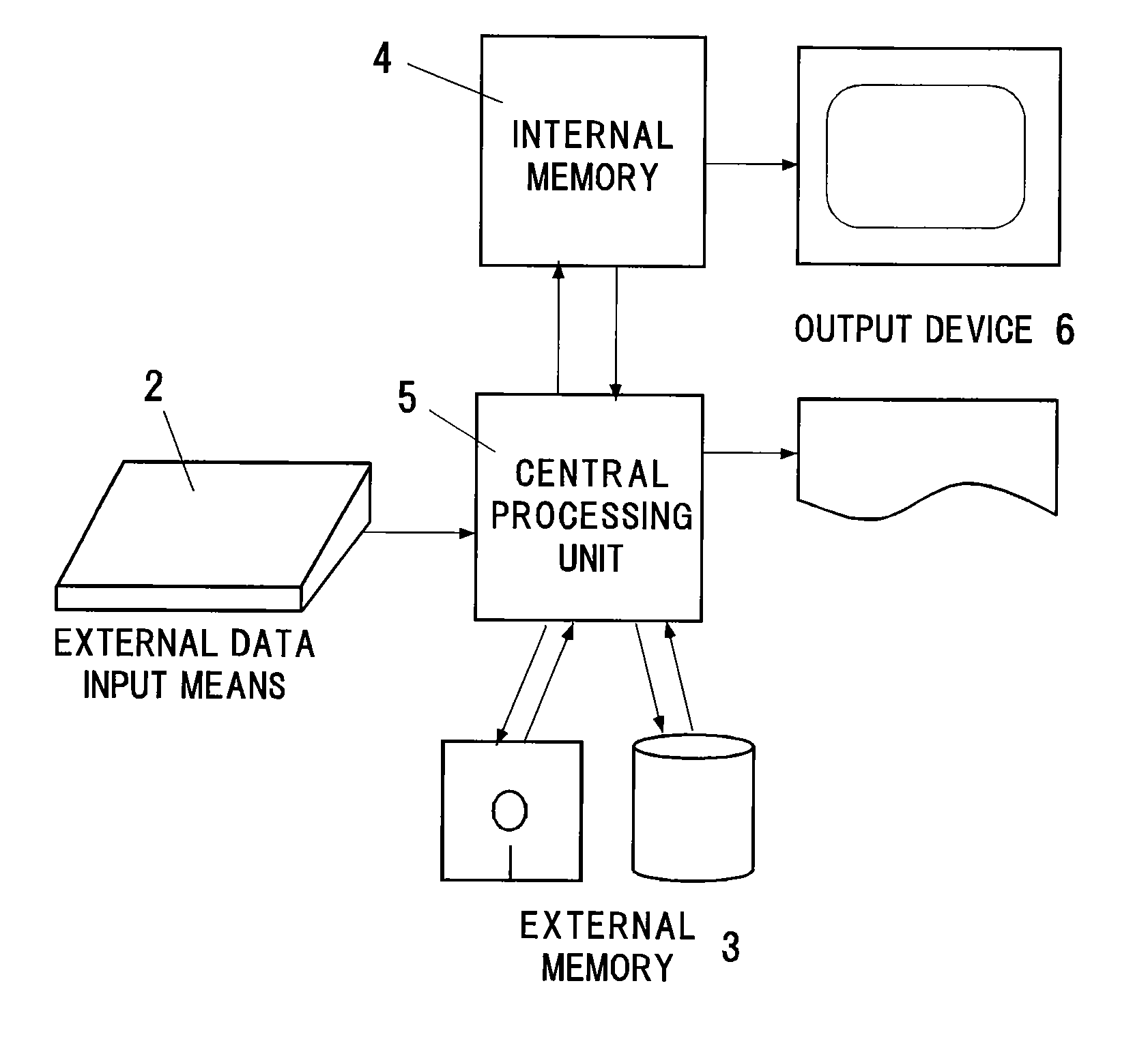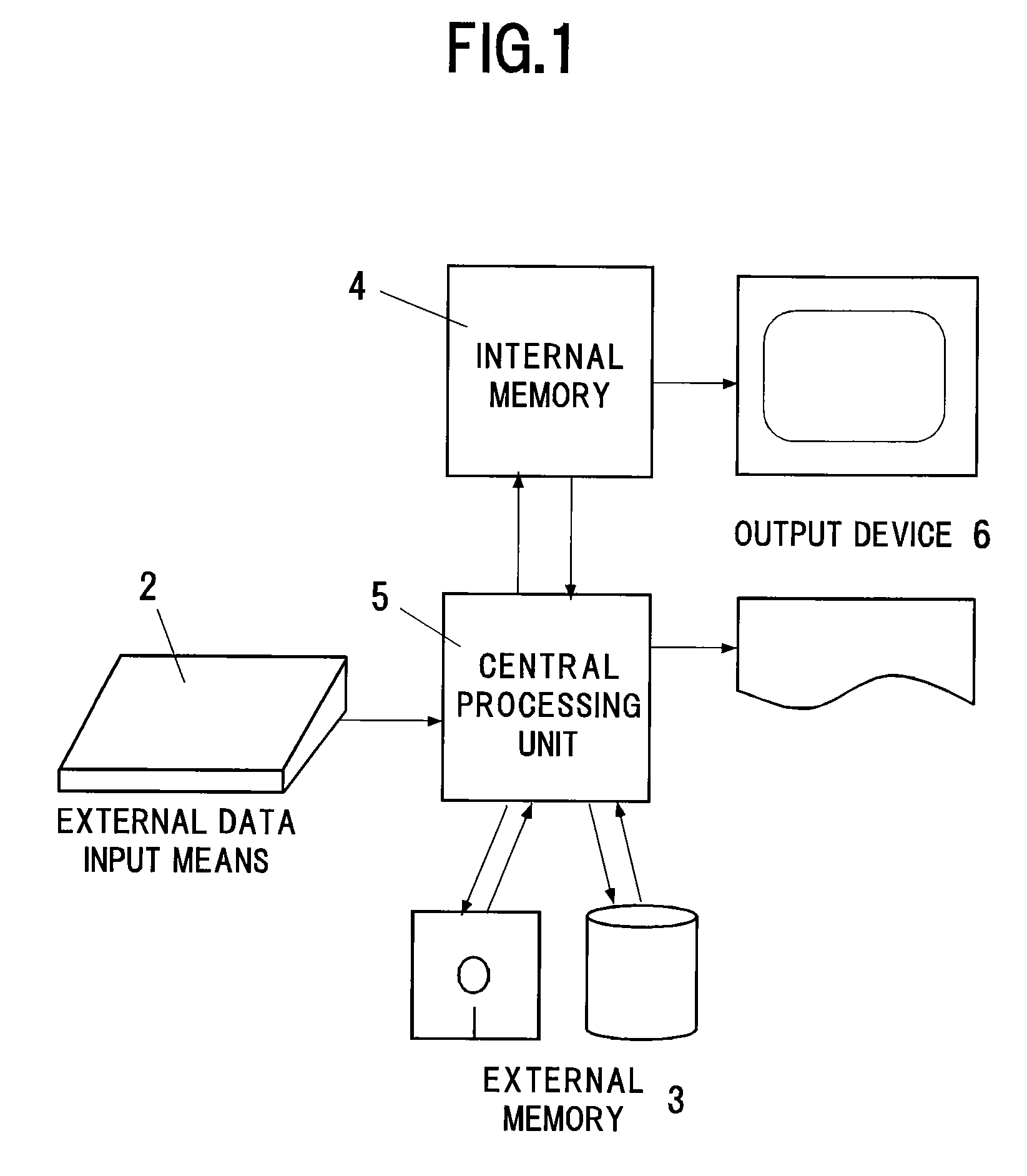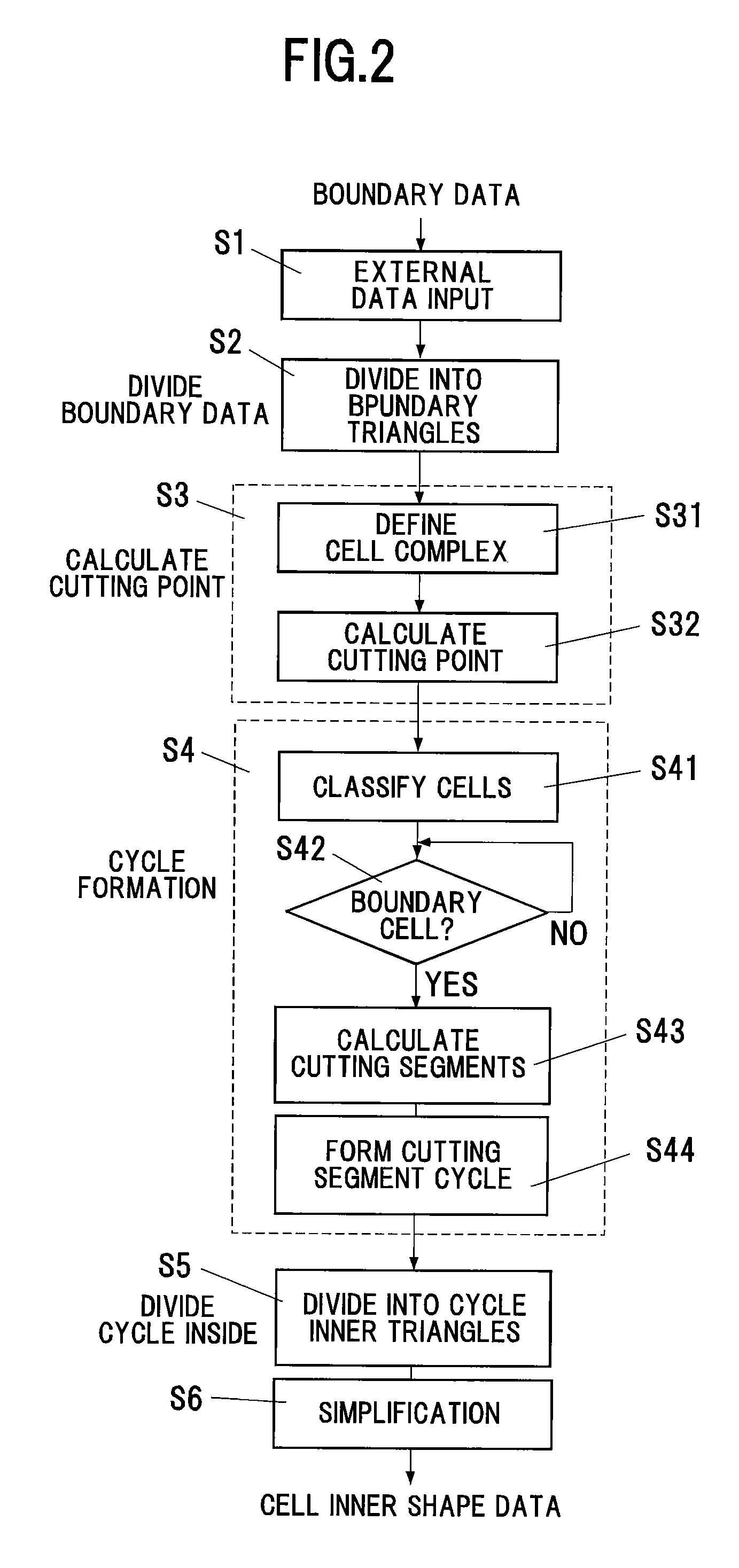Method and program for converting boundary data into cell inner shape data
a cell inner shape and boundary data technology, applied in the field of volume data generation, can solve the problems of difficult to retrieve adjacency relationships, inability to process (step 2), and limitation of a single personal computer (pc) to deal with massive data, so as to achieve robust acquisition of cutting points and reliably form the cutting segment cycle. robust
- Summary
- Abstract
- Description
- Claims
- Application Information
AI Technical Summary
Benefits of technology
Problems solved by technology
Method used
Image
Examples
Embodiment Construction
[0090] Hereinafter, the preferred embodiments of the present invention will be described by referring to the accompanying drawings.
1. Apparatus Configuration
[0091] Referring to FIG. 1, there is shown an apparatus configuration diagram for executing a method of the present invention. As shown in this diagram, the apparatus includes external data input means 2, an external memory 3, an internal memory 4, a central processing unit 5, and output devices 6.
[0092] The external data input means 2 is, for example, a keyboard, for use in inputting external data composed of boundary representation data of an object. The external memory 3 is a hard disk, a flexible disk, a magnetic tape, a compact disk, or the like and stores boundary data and cell inner shape data of an object and a conversion program therefor. The internal memory 4 is, for example, a RAM, ROM, or the like and stores arithmetic information. The central processing unit 5 (CPU) intensively processes arithmetic operation, in...
PUM
 Login to View More
Login to View More Abstract
Description
Claims
Application Information
 Login to View More
Login to View More - R&D
- Intellectual Property
- Life Sciences
- Materials
- Tech Scout
- Unparalleled Data Quality
- Higher Quality Content
- 60% Fewer Hallucinations
Browse by: Latest US Patents, China's latest patents, Technical Efficacy Thesaurus, Application Domain, Technology Topic, Popular Technical Reports.
© 2025 PatSnap. All rights reserved.Legal|Privacy policy|Modern Slavery Act Transparency Statement|Sitemap|About US| Contact US: help@patsnap.com



